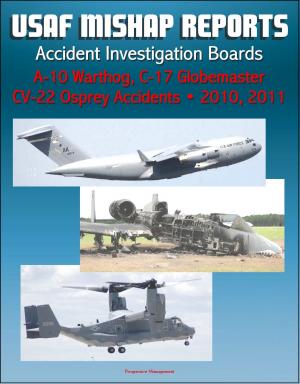NORAD History: North American Aerospace Defense Command Key Historical Events, Cold War and Nuclear Warfare Era, Area of Operations, Interceptor Aircraft, Cheyenne Mountain
Nonfiction, History, Military, Nuclear Warfare, Aviation| Author: | Progressive Management | ISBN: | 9781311046215 |
| Publisher: | Progressive Management | Publication: | September 16, 2014 |
| Imprint: | Smashwords Edition | Language: | English |
| Author: | Progressive Management |
| ISBN: | 9781311046215 |
| Publisher: | Progressive Management |
| Publication: | September 16, 2014 |
| Imprint: | Smashwords Edition |
| Language: | English |
This is a fascinating survey and detailed history of NORAD, the North American Aerospace Defense Command. With the beginning of the Cold War, American defense experts and political leaders began planning and implementing a defensive air shield, which they believed was necessary to defend against a possible attack by long-range, manned Soviet bombers. By the time of its creation in 1947, as a separate service, it was widely acknowledged the Air Force would be the center point of this defensive effort. Under the auspices of the Air Defense Command (ADC), first created in 1948, and reconstituted in 1951 at Ent AFB, Colorado, subordinate Air Force commands were given responsibility to protect the various regions of the United States. By 1954, as concerns about Soviet capabilities became more grave, a multi-service unified command was created, involving Naval, Army, and Air Force units—the Continental Air Defense Command (CONAD). Air Force leaders, most notably Generals Benjamin Chidlaw and Earle Partridge, guided the planning and programs during the mid-1950s. The Air Force provided the interceptor aircraft and planned the upgrades needed over the years. The Air Force also developed and operated the extensive early warning radar sites and systems which acted as "trip wire" against air attack. The advance warning systems and communication requirements to provide the alert time needed, as well as command and control of forces, became primarily an Air Force contribution, a trend which continued into the future as the nation's aerospace defense matured.
History of the North American Aerospace Defense Command * Key Historical Events * Lineage and Honors * NORAD Emblem * Commanders * Deputy Commanders * Headquarters Locations * Area of Operations * NORAD Aircraft * Associated Unit
This is a fascinating survey and detailed history of NORAD, the North American Aerospace Defense Command. With the beginning of the Cold War, American defense experts and political leaders began planning and implementing a defensive air shield, which they believed was necessary to defend against a possible attack by long-range, manned Soviet bombers. By the time of its creation in 1947, as a separate service, it was widely acknowledged the Air Force would be the center point of this defensive effort. Under the auspices of the Air Defense Command (ADC), first created in 1948, and reconstituted in 1951 at Ent AFB, Colorado, subordinate Air Force commands were given responsibility to protect the various regions of the United States. By 1954, as concerns about Soviet capabilities became more grave, a multi-service unified command was created, involving Naval, Army, and Air Force units—the Continental Air Defense Command (CONAD). Air Force leaders, most notably Generals Benjamin Chidlaw and Earle Partridge, guided the planning and programs during the mid-1950s. The Air Force provided the interceptor aircraft and planned the upgrades needed over the years. The Air Force also developed and operated the extensive early warning radar sites and systems which acted as "trip wire" against air attack. The advance warning systems and communication requirements to provide the alert time needed, as well as command and control of forces, became primarily an Air Force contribution, a trend which continued into the future as the nation's aerospace defense matured.
History of the North American Aerospace Defense Command * Key Historical Events * Lineage and Honors * NORAD Emblem * Commanders * Deputy Commanders * Headquarters Locations * Area of Operations * NORAD Aircraft * Associated Unit















